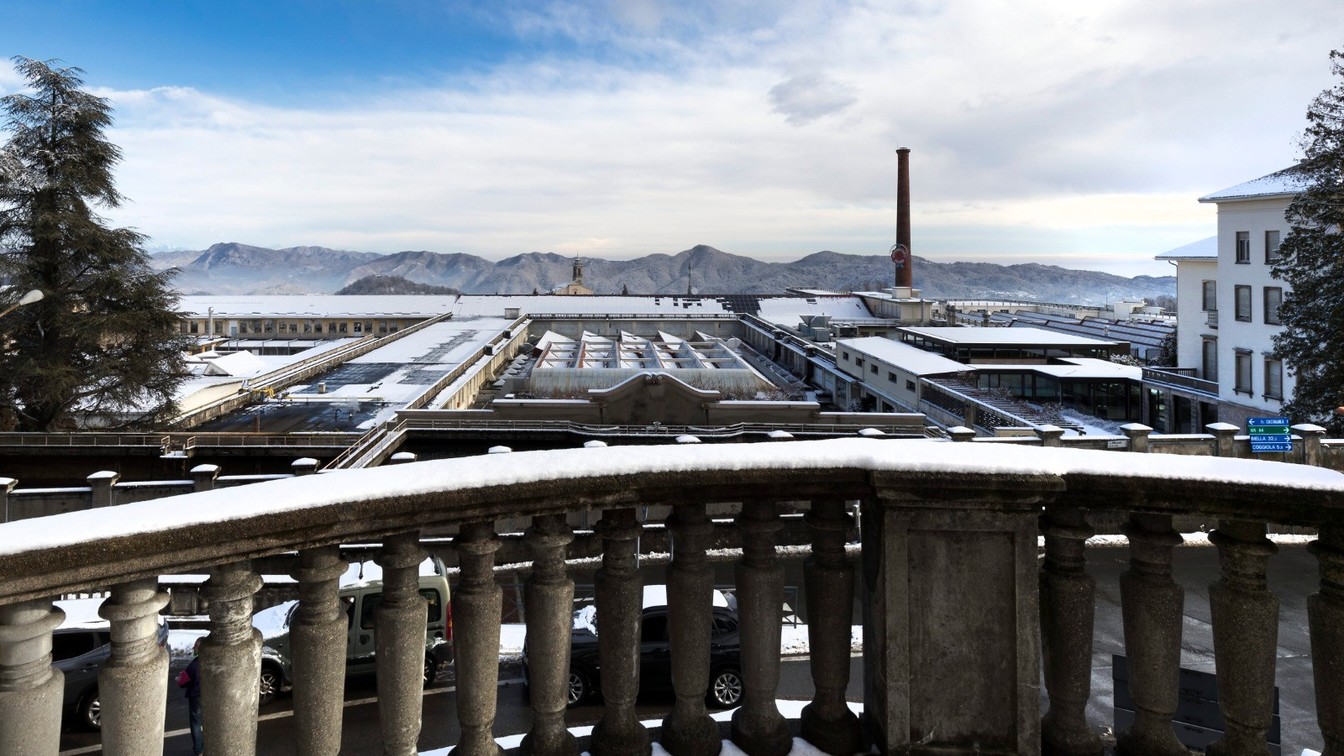

A long climb, all hairpin bends until very tall puffs of steam indicate that we have arrived at our destination. We are in Trivero, a small village in the Biella Alps, where Ermenegildo Zegna, at just 18 years old, founded his woolen mill. Born in 1892, son of a watchmaker, fresh from vocational college in Biella, he fulfilled his dream. Here, at an altitude of 800 meters, we still find today the beating heart of the company, later expanded in the 1930s, which his successors – now fourth generation – promoted around the world, achieving its listing last year on the New York Stock Exchange. MAG takes you into this sacred temple of textiles, a gigantic and fascinating 4-storey factory with large windows and paintings by Ettore Pistoletto Olivero (father of Michelangelo) on the walls.
From afar, it is immediately recognizable by the ancient chimney featuring the original logo, placed at a strange angle: it faces the cemetery in the mountains where the founder lies. In the company, you can still see the complete manufacturing cycle: from the wool staple to the finished fabric.
And after wandering around the different sections for hours – a privilege, given that it is rarely open to visitors – we can confirm that behind each ready-to-wear garment, there is an enormous amount of work. At the peak of activity, in the 1970s, over a thousand people worked here; today there are 450, all with a background of serious training. On the other hand, the pace is fast and the operations very delicate.
When you enter the 'quality control' room, you see skilled hands caressing the fabric, up and down, over and over, searching for even the smallest imperfection to correct
Work starts at 6 in the morning, with the first shift, and goes on all night in some sectors, with the third shift. Each department offers a surprise, reveals the 'via crucis' of a beautiful tailored suit. When you enter the 'quality control' room you see skilled hands caressing the fabric, up and down, infinite times, looking for the smallest imperfection to correct. While we were there, one skilled woman, head bowed over the bench and eyes narrowed in concentration, was poring over one of the finest fabrics, the 'Vellus Aureum trophy selection', made of a merino wool finer than cashmere, tailor-made for a particular customer. Who? We’d love to tell you and the name was visible, but they made us promise not to say. Yep, it’s called privacy. Each station is called the 'tribunal'.
And if the 'judges' find a defect, ‘Halt! None shall pass!’: repairs are completed with a needle and thread, and then it's back to finishing where the fabrics are washed and dried with steam, and then back again to quality control. It's almost an obsession, the three steps of quality. But this is the end of the journey. The beginning is among the bags overflowing with wool staples, where we were able to sink our hands in and feel the difference between the merino wool from Australia and New Zealand, the Kid mohair from South Africa, the cashmere from Mongolia and even most precious fiber in the world, the vicuña from Peru, which the Incas used to weave the robes of kings. And this was already an experience in itself.
Then we saw the spinning reels, each bulging with its 100 kilometers of thread. Warping, dyeing with mélange effects, and the weaving room, where there are 100 looms, from the oldest with wooden shuttles to the very modern "air" looms, which can produce 30 centimeters of fabric per minute. Here, the floor almost shakes with the frantic 'beats' of the machines, while protective earplugs dull the din. Upstairs is the 'style' department, where trends are decided and work is already underway on the spring-summer 2024 collection.